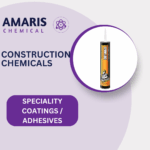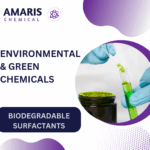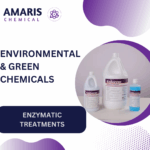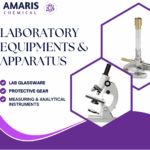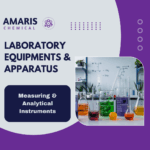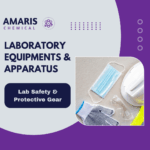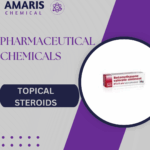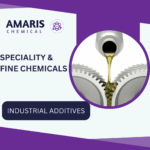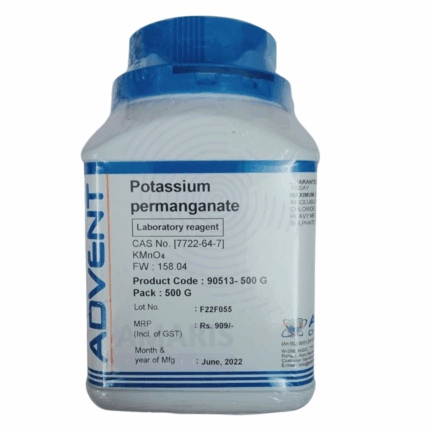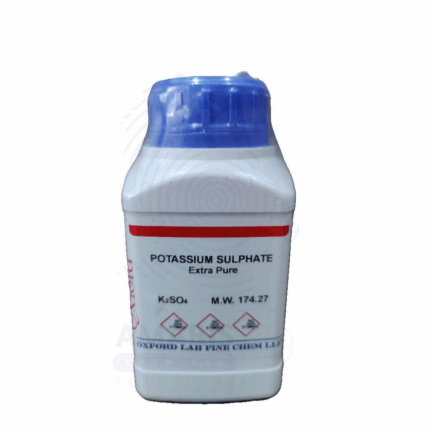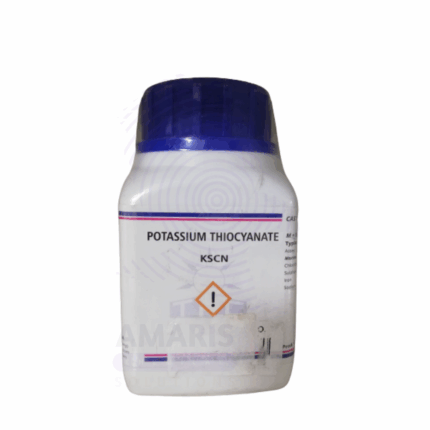
Potassium Permanganate Extra Pure
Potassium Permanganate Extra Pure is a powerful oxidizing agent recognized for its deep purple crystals and wide range of applications. In laboratory settings, it is frequently used in redox titrations, organic synthesis, and as a disinfectant due to its strong antiseptic properties. This compound is also valued in water treatment for removing iron, hydrogen sulfide, and organic impurities. Its extra pure grade guarantees high chemical integrity, making it ideal for analytical procedures, research work, and high-precision industrial uses where purity is critical.
Potassium Sorbate Extra Pure
Potassium Sorbate Extra Pure is a high-grade preservative commonly used in laboratory research, food preservation, cosmetics, and pharmaceuticals. Known for its effectiveness in inhibiting the growth of molds, yeasts, and fungi, it is a preferred choice for extending shelf life in various formulations. Its excellent solubility in water and low toxicity make it suitable for sensitive applications where purity is critical. In food and beverage testing or development, it plays a key role in microbial control without altering taste or color. The extra pure designation ensures minimal impurities, supporting accurate and consistent experimental or formulation outcomes.
Potassium Sulphate Extra Pure
Potassium Sulphate Extra Pure is a premium-grade inorganic salt widely used in laboratories and industrial research. It serves as a reliable source of both potassium and sulfur, making it essential in analytical chemistry, fertilizer testing, and solution preparation. Its high solubility and chemical stability allow it to be used in qualitative and quantitative analysis, as well as in preparing culture media. The extra pure quality ensures that it contains minimal contaminants, providing consistent performance in sensitive experimental procedures, including high-purity formulations and calibration standards.
Potassium Thiocyanate Extra Pure
Potassium Thiocyanate Extra Pure is a high-purity crystalline compound commonly used in analytical chemistry, forensic science, and complexometric titrations. Known for forming deeply colored complexes with iron and other metal ions, it is frequently employed as a qualitative reagent for detecting ferric ions. In laboratory environments, it also plays a role in spectrophotometric analysis, chemical synthesis, and photographic processing. Its extra pure grade ensures exceptional clarity and consistency in results, making it suitable for precision applications where reagent-grade chemicals are not sufficient.
Powder Sodium Mono Fluoro Phosphate Extra Pure
Powder Sodium Mono Fluoro Phosphate Extra Pure is a fine, white crystalline compound widely used in dental and pharmaceutical formulations. Known for its role as a source of fluoride, it is a key active ingredient in many toothpastes, where it helps strengthen tooth enamel and prevent dental cavities. In laboratory environments, its extra pure grade ensures suitability for high-precision chemical synthesis and formulation testing. The compound is also utilized in specialty applications involving fluorination processes, offering reliable stability and consistent fluoride release.


 Preservatives(food)
Preservatives(food) Flavor Enhancers
Flavor Enhancers Acidulants
Acidulants Sweeteners
Sweeteners Antioxidants
Antioxidants Colorants(food)
Colorants(food) Nutraceutical Ingredients (food)
Nutraceutical Ingredients (food) Nutrient Supplements
Nutrient Supplements Emulsifiers
Emulsifiers
 Collectors
Collectors Dust Suppressants
Dust Suppressants Explosives and Blasting Agents
Explosives and Blasting Agents Flocculants and Coagulants
Flocculants and Coagulants Frothers
Frothers Leaching Agents
Leaching Agents pH Modifiers
pH Modifiers Precious Metal Extraction Agents
Precious Metal Extraction Agents
 Antioxidants(plastic)
Antioxidants(plastic) Colorants (Pigments, Dyes)
Colorants (Pigments, Dyes) Fillers and Reinforcements
Fillers and Reinforcements Flame Retardants
Flame Retardants Monomers
Monomers Plasticizers
Plasticizers Polymerization Initiators
Polymerization Initiators Stabilizers (UV, Heat)
Stabilizers (UV, Heat)
 Antifoaming Agents
Antifoaming Agents Chelating Agents
Chelating Agents Coagulants and Flocculants
Coagulants and Flocculants Corrosion Inhibitors
Corrosion Inhibitors Disinfectants and Biocides
Disinfectants and Biocides Oxidizing Agents
Oxidizing Agents pH Adjusters
pH Adjusters Scale Inhibitors( water)
Scale Inhibitors( water)
 Antioxidants(cosmetic)
Antioxidants(cosmetic) Emollients
Emollients Fragrances and Essential Oils
Fragrances and Essential Oils Humectants
Humectants Preservatives
Preservatives Surfactants(cosmetic)
Surfactants(cosmetic) Thickeners
Thickeners UV Filters
UV Filters
 Fertilizers
Fertilizers Soil Conditioners
Soil Conditioners Plant Growth Regulators
Plant Growth Regulators Animal Feed Additives
Animal Feed Additives Biostimulants
Biostimulants Pesticides (Herbicides, Insecticides, Fungicides)
Pesticides (Herbicides, Insecticides, Fungicides)
 Active Pharmaceutical Ingredients (APIs)
Active Pharmaceutical Ingredients (APIs) Excipients
Excipients Solvents(pharmaceutical)
Solvents(pharmaceutical) Antibiotics
Antibiotics Antiseptics and Disinfectants
Antiseptics and Disinfectants Vaccine Adjuvants
Vaccine Adjuvants Nutraceutical Ingredients (pharmaceutical)
Nutraceutical Ingredients (pharmaceutical) Analgesics & Antipyretics
Analgesics & Antipyretics
 Analytical Reagents
Analytical Reagents Solvents(lab)
Solvents(lab) Chromatography Chemicals
Chromatography Chemicals Spectroscopy Reagents
Spectroscopy Reagents microbiology-and-cell-culture-reagents
microbiology-and-cell-culture-reagents Molecular Biology Reagents
Molecular Biology Reagents Biochemical Reagents
Biochemical Reagents Inorganic and Organic Standards
Inorganic and Organic Standards Laboratory Safety Chemicals
Laboratory Safety Chemicals Specialty Laboratory Chemicals(Special Laboratory Equipment)
Specialty Laboratory Chemicals(Special Laboratory Equipment)
 Demulsifiers
Demulsifiers Hydraulic Fracturing Fluids
Hydraulic Fracturing Fluids Scale Inhibitors(oil)
Scale Inhibitors(oil) Surfactants(oil)
Surfactants(oil) Drilling Fluids
Drilling Fluids
 Dyes and Pigments
Dyes and Pigments Bleaching Agents
Bleaching Agents Softening Agents
Softening Agents Finishing Agents
Finishing Agents Antistatic Agents
Antistatic Agents
 Admixtures
Admixtures Waterproofing Agents
Waterproofing Agents Sealants and Adhesives
Sealants and Adhesives Curing Compounds
Curing Compounds Concrete Repair Chemicals
Concrete Repair Chemicals Anti-Corrosion Coatings
Anti-Corrosion Coatings
 Surfactants(cleaning)
Surfactants(cleaning) Builders
Builders Enzymes
Enzymes Solvents (Cleaning)
Solvents (Cleaning) Fragrances
Fragrances
 Electronic Chemicals
Electronic Chemicals Catalysts
Catalysts Lubricants
Lubricants Photographic Chemicals
Photographic Chemicals Refrigerants
Refrigerants Automotive chemicals
Automotive chemicals Pyrotechnic Chemicals
Pyrotechnic Chemicals
 Biodegradable Surfactants
Biodegradable Surfactants Bio-based Solvents
Bio-based Solvents Renewable Polymers
Renewable Polymers Carbon Capture Chemicals
Carbon Capture Chemicals Wastewater Treatment Chemicals
Wastewater Treatment Chemicals
 Pigments
Pigments Solvents(paint)
Solvents(paint) Specialty Coatings
Specialty Coatings Binders/Resins
Binders/Resins Additives
Additives Driers
Driers Anti-Corrosion Agents
Anti-Corrosion Agents Functional Coatings
Functional Coatings Application-Specific Coatings
Application-Specific Coatings
 Fresh Herbs
Fresh Herbs Ground Spices
Ground Spices Whole Spices
Whole Spices Spice Blends
Spice Blends Dried Herbs
Dried Herbs
 Leavening Agents
Leavening Agents Dough Conditioners
Dough Conditioners Flour Treatments
Flour Treatments Fat Replacers
Fat Replacers Decoratives
Decoratives Preservatives(baking)
Preservatives(baking)
 Plasticizers & Softeners
Plasticizers & Softeners Reinforcing Agents
Reinforcing Agents Adhesion Promoters
Adhesion Promoters Vulcanizing Agents
Vulcanizing Agents Antidegradants
Antidegradants Blowing Agents
Blowing Agents Fillers & Extenders
Fillers & Extenders Accelerators & Retarders
Accelerators & Retarders
